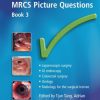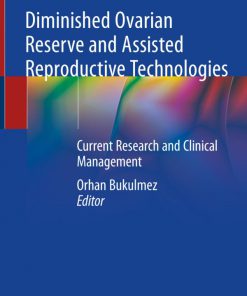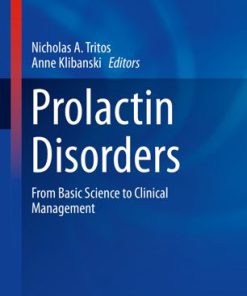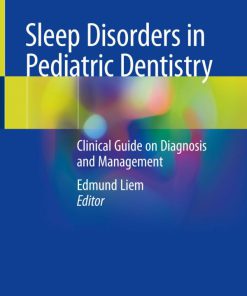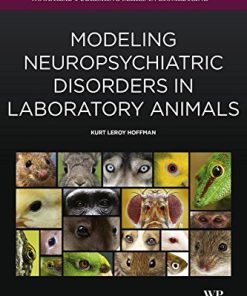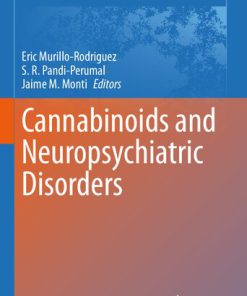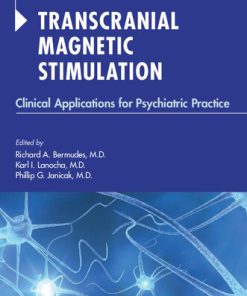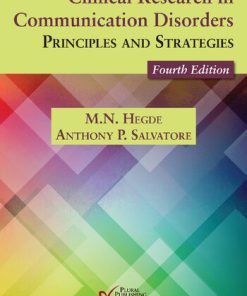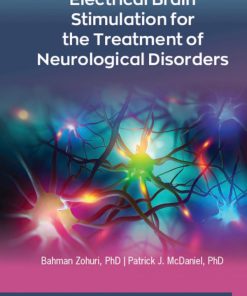Transcranial Direct Current Stimulation in Neuropsychiatric Disorders 1st edition by Andre Brunoni 9783319339658 3319339656
$50.00 Original price was: $50.00.$25.00Current price is: $25.00.
Transcranial Direct Current Stimulation in Neuropsychiatric Disorders 1st edition by Andre Brunoni- Ebook PDF Instant Download/Delivery:9783319339658,3319339656
Full dowload Transcranial Direct Current Stimulation in Neuropsychiatric Disorders 1st edition after payment
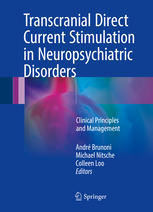
Product details:
ISBN 10:3319339656
ISBN 13:9783319339658
Author:Andre Brunoni
Transcranial Direct Current Stimulation in Neuropsychiatric Disorders 1st Table of contents:
Part I: Introduction and Mechanisms of Action
1: Historical Aspects of Transcranial Electric Stimulation
The First Clinical-Therapeutic Electrical Applications: The Electric Fish
Transcranial Electrical Stimulation: From Electrostatic Machines to Volta’s Pile
The Reappraisal of Transcranial Direct Current Stimulation (tDCS) from 1960 Onward
Concluding Remarks
References
2: The New Modalities of Transcranial Electric Stimulation: tACS, tRNS, and Other Approaches
Introduction
tACS: Intrusion with Brain Oscillation
Modulating the Activity of the Human Brain Using tACS
Using tACS on Another Way: tRNS
Other Types of Oscillatory tES: Oscillating Transcranial Direct Current Stimulation (o-DCS)
Clinical Applications
Conclusions
References
3: Physiology of Transcranial Direct and Alternating Current Stimulation
Introduction
tDCS
tDCS Protocols and Effects
Current Intensity/Density
Electrode Position/Configuration/Current Direction
Stimulation Duration/Interval
tDCS Physiology
Regional Effects of tDCS
Acute Change of Cortical Excitability
Sustained Change of Cortical Excitability and Activity
Pharmacology of tDCS
tDCS Effect on Cortical Regions Other Than M1
Inter-regional Effects of tDCS
tACS
tACS Protocols and Effects
Physiological Effects of tACS
tACS Effects on Cognition and Behaviour
General Remarks
References
4: Computer-Based Models of tDCS and tACS
Overview of Computational Models of Noninvasive Neuromodulation
Methods and Protocols in the Generation of Computational Forward Models of tDCS/tACS
Pitfalls and Challenges in the Application and Interpretation of Computational Model Predictions
Use of Computational Models in Clinical Practice: Consideration for Efficacy
Use of Computational Models in Clinical Practice: Consideration for Safety
Use of Computational Models in Clinical Practice: Consideration for Individual Dose Titration
Example Results of Computational Analysis in Susceptible Populations
Conclusion
References
5: Animal Studies in the Field of Transcranial Electric Stimulation
Experimental Design of tDCS and tACS Animal Studies
Classification of Animal Studies and Relevance to Clinical Protocols
tDCS and tACS Dose
The Quasi-Uniform Assumption
Translation from Animal Studies to Clinical Applications: The Importance of Intensity
Safety Concerns
Relating Biomarkers from Animal Models to Humans
Neuronal Polarization
Polarity-Specific Effects for DCS and Implications for ACS
Quantifying Neuronal Polarization with Coupling Constants
Synaptic Plasticity
Network Effects
tDCS and Oscillations
tACS and Oscillations
Applications to Clinical Pathologies
Addiction
Alzheimer’s Disease
Chronic Stress
Prospects for Animal Research in tDCS/tACS Informing Ongoing Human Trials
References
6: Cortical Inhibition and Excitation in Neuropsychiatric Disorders Using Transcranial Magnetic St
Introduction
Applications of TMS
Importance of GABA
Inhibitory TMS Paradigms
Cortical Silent Period and Long-Interval Cortical Inhibition
Short-Interval Cortical Inhibition
Transcallosal Inhibition
Short Latency Afferent Inhibition
Excitatory TMS Paradigms
MEP Amplitude
Motor Threshold
Intracortical Facilitation
Short-Interval Intracortical Facilitation
Inhibitory Neurotransmission in Psychiatric Disorders
Inhibitory Impairments in Patients with Schizophrenia
Cortical Excitability in OCD Patients
TMS and MDD Patients
TMS in Patients with Bipolar Disorder
Clinical Implications
Use of EEG
TMS Combined with EEG
Application of Combined TMS and EEG in Psychiatric Disorders
Clinical Applications of Brain Stimulation
Repetitive TMS
Theta Burst Stimulation
Transcranial Direct Current Stimulation
Concluding Remarks
Discussion and Conclusions
References
7: Neurocognitive Effects of tDCS in the Healthy Brain
Introduction
Effects of tDCS on Working Memory
Effects of tDCS on Attention
Effects of tDCS on Language
Effects of tDCS on Numerical Cognition
Effects of tDCS on Learning and Memory
Neurocognitive Effects of tDCS in Healthy Older Adults
Inter-individual Differences in the Context of tDCS Outcomes
Conclusions
References
8: Transcranial Direct Current Stimulation in Social and Emotion Research
Introduction
tDCS on Emotion Studies
Emotional Memory Encoding and Retrieval
Emotional Prosody
Emotional Face Processing
Emotion Regulation
Social Pain
Fear Conditioning
Social Neuroscience
Implicit Prejudice
Social Decision-Making
Perspective Taking
Conclusions
References
9: Multimodal Association of tDCS with Electroencephalography
Introduction: A Brief Picture of the Present State of Research
Principles of Multimodal Association
Advantages of Combining tES with Other Methods
tES–EEG Technical Aspects
tDCS–EEG in Studying Cortical Excitability, Connectivity and Plasticity
Multimodal Imaging as a Diagnostic/Prognostic Tool in Neuropsychiatric Disorders
Conclusions and Final Remarks
References
10: tDCS and Magnetic Resonance Imaging
Introduction
Combining tDCS and MRI
Functional Magnetic Resonance Imaging
BOLD Functional MRI
Resting-State fMRI
tDCS Has Significant, but Somewhat Unclear, Effects on Resting Functional Connectivity
tDCS as a Potential Tool to Understand the Basis of Resting Functional Connectivity
Task-Based fMRI
Studies in Healthy Controls
Arterial Spin Labelling
Magnetic Resonance Spectroscopy
1H-MRS
Neurochemicals of Interest
Glutamate
GABA
N-Acetylaspartate Acid and Creatine
31P-MRS
Combining tDCS with MRS
Conclusions and Future Directions
References
11: Target Engagement with Transcranial Current Stimulation
Mechanistic Insights from Animal Studies
Effect of Electric Fields on Individual Neurons
Interactions of Network Oscillations and Electric Fields
Outlasting Effects of Electric Fields
Interaction of Cellular and Network Mechanisms
Computational Models
Forward Models
Computational Neural Models
Future Directions
Effects of Weak Electric Fields on the Human Brain
Neurophysiology of tDCS in Humans
Mechanisms of tDCS in Humans
Neurophysiology of tACS in Humans
Mechanism of tACS in Humans
Probing Functional Connectivity with tES
Application of tES to Sleep Oscillations
Mechanisms of Slow Oscillations
Modulating the Slow Oscillation with Weak Electric Fields
Anesthesia as a Tool to Study Slow Oscillations
Outlook
References
12: Cerebellar and Spinal tDCS
Cerebellar Transcranial Direct Current Stimulation: Technique’s Overview and Clinical Applicatio
Transcutaneous Spinal Direct Current Stimulation: Technique’s Overview
Mechanisms of Action
Putative Mechanisms of Action at a Spinal Level
Putative Mechanisms of Action at a Supra-Spinal Level
Perspective on Clinical Studies
Why Should Psychiatrists Be Interested in Cerebellar/Spinal DC Stimulation?
References
Part II: Applications of tDCS in Neuropsychiatric Disorders
13: Mood Disorders
Major Depressive Disorder
Introduction
Technical Aspects of Using tDCS in Major Depression
Mechanisms of Action
Clinical Evidence
Open-Label Studies
Randomized, Sham-Controlled Trials
Follow-Up Studies
Meta-Analyses
Bipolar Disorder
Discussion
References
14: Schizophrenia
Introduction
Effects of Frontotemporal tDCS on Auditory Verbal Hallucinations
Effects of Frontotemporal tDCS on Other Symptoms
Predictive Markers of Response to Frontotemporal tDCS on Auditory Verbal Hallucinations
Brain Correlates of the Effects of Frontotemporal tDCS on Auditory Verbal Hallucinations
Effects of Frontal tDCS on Negative Symptoms and Other Symptoms of Schizophrenia
Brain Correlates of the Effects of Frontal tDCS on Negative Symptoms
Effects of Frontal tDCS on Other Symptoms
Effects of TDCS on Cognitive Functions
Safety of Using tDCS for Treating Schizophrenia
Optimizing tDCS Efficacy on Symptoms of Schizophrenia
Optimizing tDCS Parameters
Other Modalities of Transcranial Electric Stimulation in Schizophrenia
Combining tDCS with Other Approaches
Conclusion
References
15: OCD, Anxiety Disorders, and PTSD
Introduction
OCD
tDCS in Anxiety Disorders
tDCS in PTSD
Conclusion
References
16: Neurodegenerative Cognitive Disorders
Alzheimer’s Dementia
Lewy Bodies Dementia and Parkinson’s Disease
Conclusions and Future Directions
References
17: Impulsivity and Substance-Use Disorders
Introduction
Neural Substrates of Substance-Use Disorders
Neural Substrates of Craving
The Use of tDCS Applied to DLPFC in SUD
Tobacco-Use Disorder (TUD)
Cannabis-Use Disorders
Alcohol-Use Disorders (AUD)
Stimulant-Use Disorders
Discussion and Conclusion
References
18: Epilepsy
Introduction
Introduction: Neuromodulation in Epilepsy
tDCS in Epilepsy
Clinical Studies
Preclinical Studies
Conclusion
References
19: Pain Syndromes
Introduction
Effects and Putative Mechanisms of tDCS in Different Chronic Pain Syndromes
Fibromyalgia
Migraine Headache
Neuropathic Pains
Concluding Remarks
References
20: Stroke
Motor Recovery
Visuospatial Neglect
Aphasia
Dysphagia
Cognitive Decline
Spasticity
Post-stroke Depression
Central Post-stroke Pain
Conclusions
References
21: Transcranial Direct Current Stimulation in Disorders of Consciousness
Introduction
Definition of Disorders of Consciousness (DOC)
Current Treatment and Limitations in Patients with Disorders of Consciousness (DOC)
tDCS in Disorders of Consciousness (DOC)
Pilot Studies
Neuronal Correlates of tDCS in DOC
tDCS as a Diagnostic Tool
Long-Term Effects
Conclusions and Future Directions
References
Part III: The Clinical Use of tDCS
22: Safety and Tolerability
Introduction
Tolerability
Common Adverse Effects
Skin Reddening
Parameters Associated with Adverse Effects
Acceptability in Clinical Trials
Safety
Serious Adverse Effects
Skin Lesions
Safety in Neuropsychiatric Samples
Functional Impairment
Contraindications
Conclusion
References
23: Home-Based tDCS: Design, Feasibility and Safety Considerations
Introduction
tDCS Suitability for Home Use
Device and Equipment Design
Patient Selection and Contraindications
Training and Credentialing
Ongoing Monitoring and Oversight
Patient Safety
Home-Based tDCS Studies
Further Approaches Using Home-�Based tDCS
References
24: Ethical Aspects of tDCS Use in Neuropsychiatry and the Risk of Misuse
Introduction: Is tDCS Hope or Hype?
The Promise of tDCS
tDCS as a Cognitive Neuroscience Tool
tDCS as a Clinical Intervention
tDCS to Enhance Normal Cognition
The Perils of tDCS
Scientific Challenges
Ethical Challenges
Safety
Justice
Character
Autonomy
Ethical Considerations Pertaining to Neuropsychiatry
Conclusion
References
25: Regulatory Aspects
Introduction
FDA Regulation of Medical Devices
tDCS in Research
tDCS in Clinical Practice
TDCS Devices
Considerations on Patient Selection
tDCS Candidates
tDCS in Pediatrics
tDCS in Pregnancy
Considerations on Application of tDCS
TDCS Experience in Other Countries
Conclusion
References
26: Clinical Research and Methodological Aspects for tDCS Research
Introduction
Clinical/Research Trial Designs
Protocol Intensity/Duration/Repetition
Methodological Aspects of Online and Offline Protocols
Blinding, Sham, and Active Control
Patient/Participant Screening
Electrodes and Contact Medium
Electrode Location
Electrode Placement
tDCS Stimulator Selection
Assessment of Safety/Adverse Events and Monitoring During Stimulation
Monitoring Functional Effects of tDCS
Concluding Remarks
People also search for Transcranial Direct Current Stimulation in Neuropsychiatric Disorders 1st:
transcranial direct current stimulation (tdcs)
anodal transcranial direct current stimulation
flow transcranial direct current stimulation
how does transcranial direct current stimulation work
high definition transcranial direct current stimulation
Tags:
Andre Brunoni,Stimulation,Neuropsychiatric,Transcranial
You may also like…
Medicine - Pharmacology
Cannabinoids and Neuropsychiatric Disorders 1st Edition Eric Murillo-Rodriguez
Medicine - Health-Related Professions


